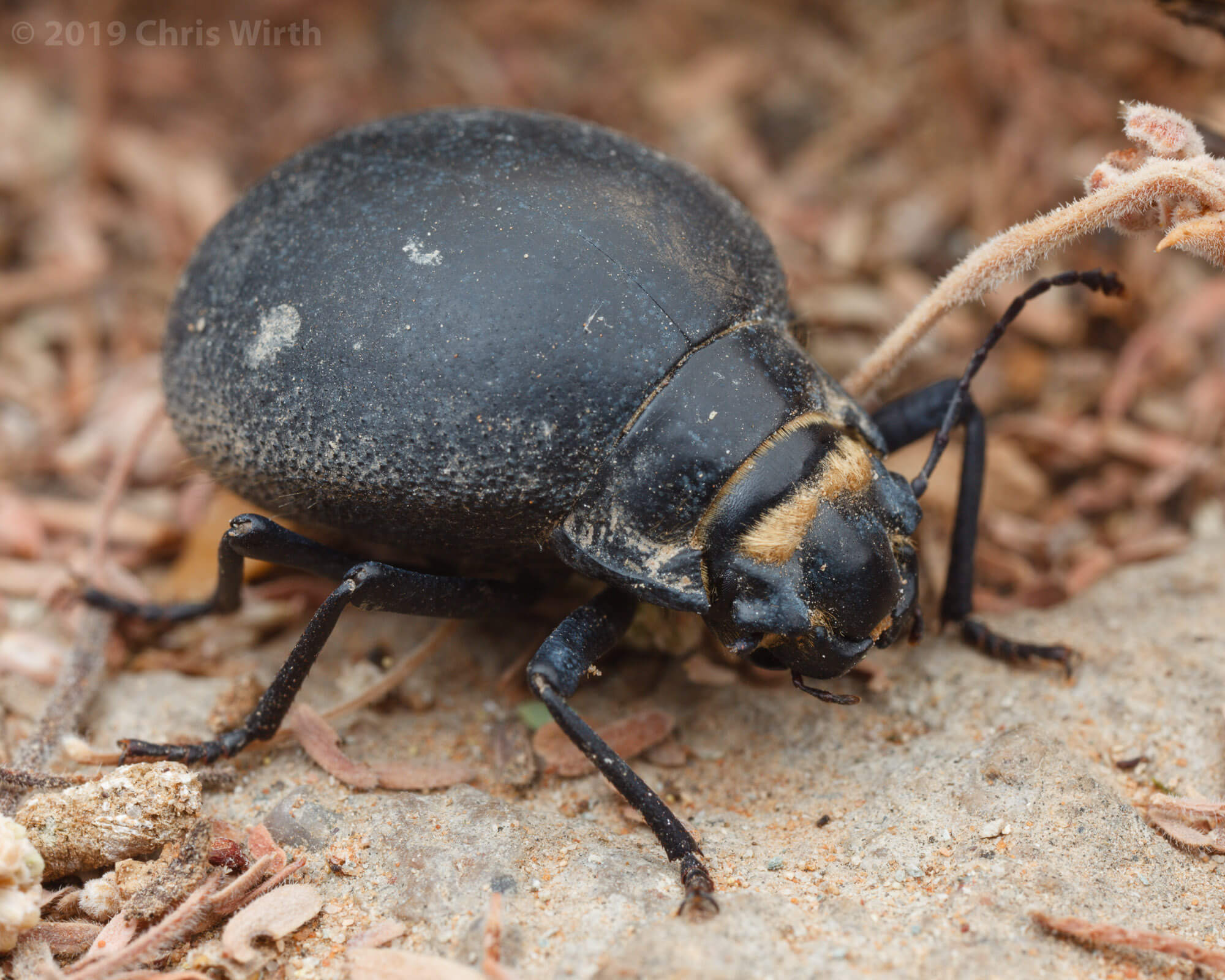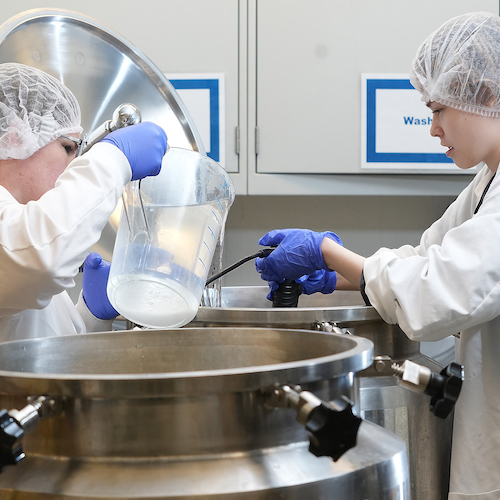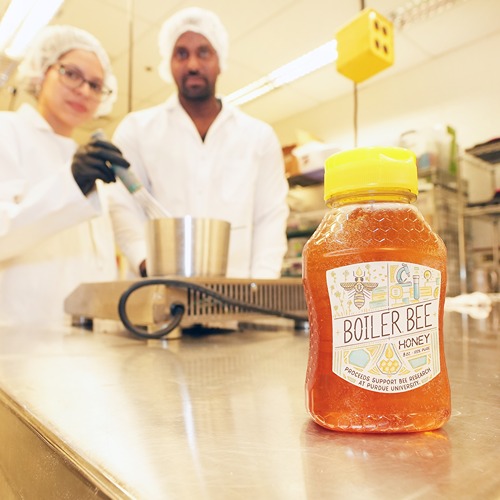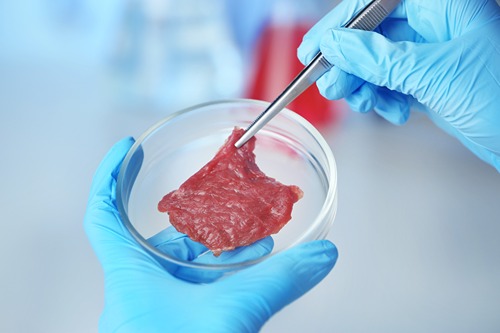The Purdue Entomological Research Collection (PERC), housed in Smith Hall, has almost 2 million insect specimens, most of which are mounted on stainless steel pins. Pinning insects is usually easy, unless you’re Aaron Smith.
Smith, an assistant professor of entomology and director of the PERC, studies Tenebrionidae, an assemblage of more than 20,000 species known collectively as darkling beetles. Some flightless darkling beetles from deserts have exteriors so hard they can withstand the pressure of a car driving over them. Pinning them is easier said than done.
“They’re these miniature tanks, and they’re so hard you can’t push a pin through them,” Smith said. “Sometimes I have to use a small drill just to get through the cuticle.”
Last year, Purdue and University of California, Irvine, researchers used state-of-the-art microscopy and other advanced and experimental computational techniques to determine why these beetle species are so tough. Their hope is this knowledge will enable the development of super strong materials. The journal Nature published their findings.

The scientists found that the elytra, which protect the back half of the beetle, come together at a suture along the abdomen and fit together like a jigsaw puzzle, allowing the layers to flex and distribute force evenly throughout the body.
“The diabolical ironclad beetle is a great example of how nature came up with clever and efficient solutions for strength and toughness,” said Pablo Zavattieri, the Jerry M. and Lynda T. Engelhardt Professor in Civil Engineering at Purdue and a co-author of the Nature paper. “In particular, learning how the elytra and the jigsaw puzzle suture work allows us to solve some interesting problems in engineering which are related to joints between dissimilar materials, applications that can range from civil, automotive and aerospace engineering.”
While that research holds promise for designing stronger materials, Smith is particularly fascinated with why these beetles have developed such strong body armor to begin with and how they have spread around the world. He recently received an $878,000 grant from the National Science Foundation to explore those questions.
“The fact that they can generate a matrix that’s so tough either from chemical composition or from the structure themselves is exciting from an engineering perspective,” said Smith, who was not involved with the Nature study. “These are harder than things we can make.”
The exoskeleton of beetles is made up of a single layer of epithelial cells, which secrete layers of hardened cuticle. This cuticle provides defense from the outside world and makes up the part of the beetle that we see. In darkling beetles, ironclad beetles, and other tough, flightless groups, the cuticle is extremely thick and super hard. This can be especially important for large flightless beetles that lack other means of defense.
“Generally, this comes down to a defense mechanism. They can’t fly away from predators, so they have limited options on how to avoid getting eaten,” Smith said. “If you’re really small, you can hide from predators. But these beetles tend to be larger, making them susceptible to birds and mammals. Being so tough makes it difficult for these predators to eat them. It’s dealing with a lifestyle problem, dealing with evolution.”

Many hard flightless beetles have developed other interesting uses for their tough exteriors. Fog-basking beetles in the Namib desert tilt their abdomens into the air to “collect fog.” Their tough, nonporous exoskeletons contain hydrophobic and hydrophilic regions that help condense the fog into water droplets that run down the body and into the beetles’ mouths. The tok-tokkie beetles, tap their tough abdomens to make a clicking sound to attract mates.
Smith’s NSF-funded work focuses on the evolutionary history of desert darkling beetles and how these species are using next-generation genome sequencing and morphology.
“There are certainly things we take from these beetles to improve engineering and materials, but these insects are so interesting from a biological and genetic perspective,” Smith said. “There’s so much we can learn about these beetles and how they use their distinct physical attributes to survive and thrive in difficult environments. They’re fascinating creatures.”





